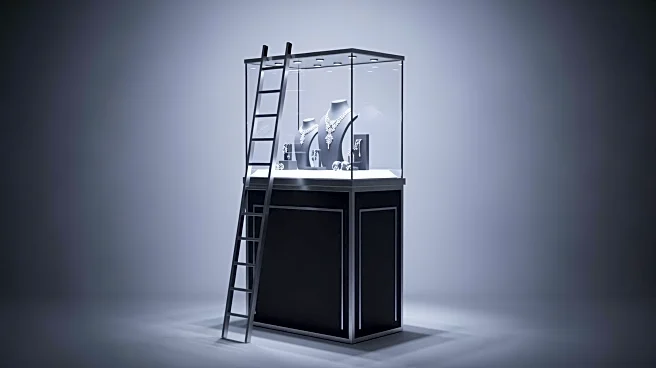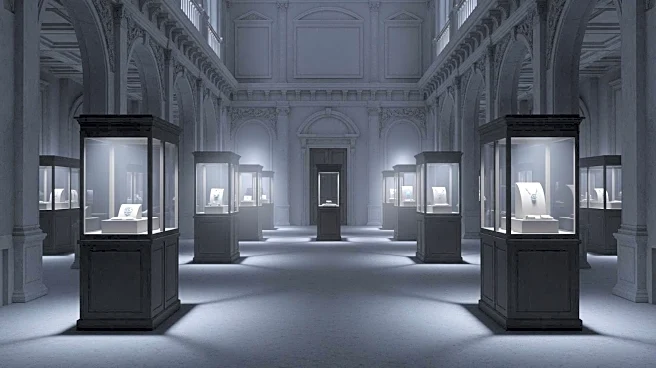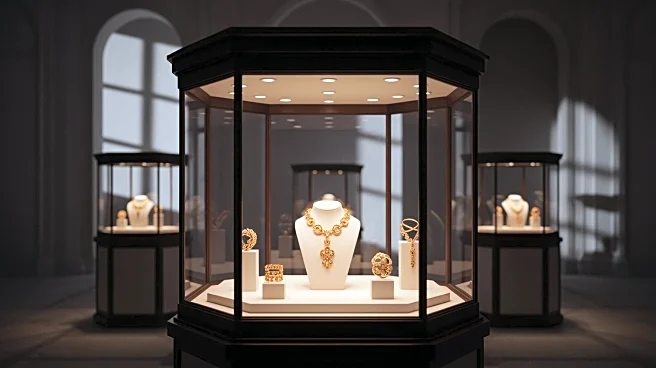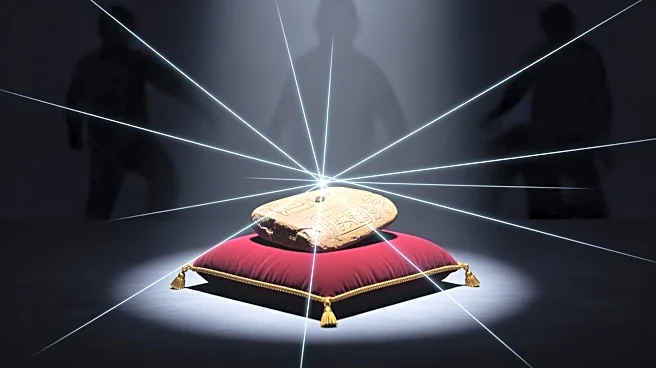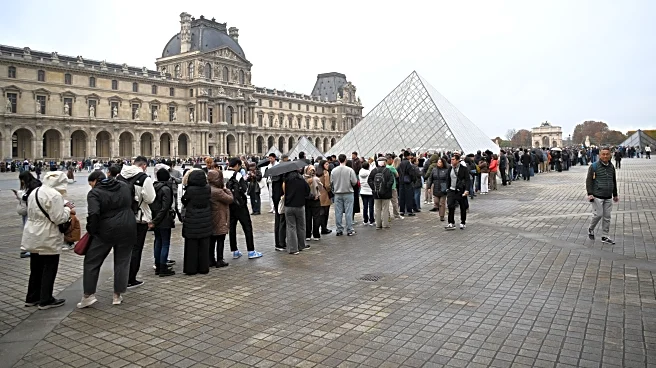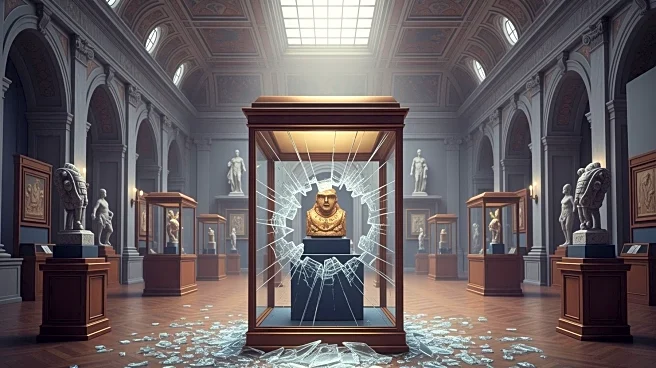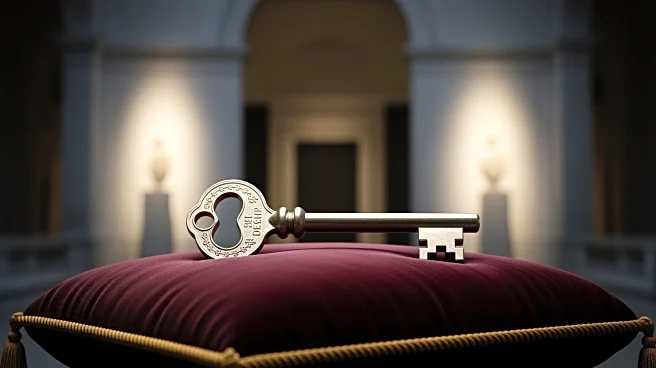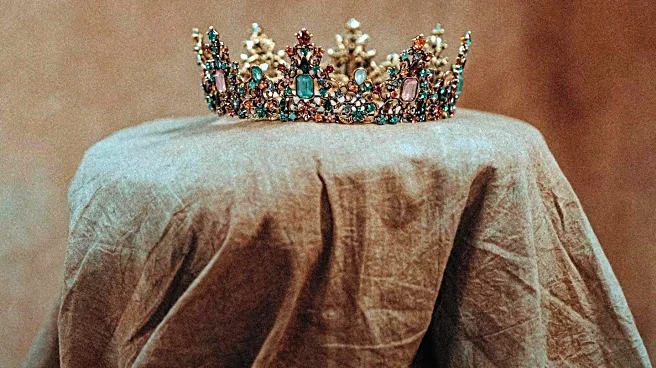What's Happening?
In a meticulously planned heist, thieves stole priceless jewelry from the Louvre Museum in Paris in less than 10 minutes. The robbers used a truck-mounted electric ladder to access a second-floor window
of the Apollo Gallery, triggering security alarms as they entered. Once inside, they smashed display cases and took eight valuable items, including a royal sapphire necklace and a diadem worn by Empress Eugénie. The thieves made their escape on high-powered scooters, leaving behind a ninth item, Empress Eugénie’s crown, which was later recovered by authorities. The museum staff followed security protocols, prioritizing the safety of visitors and staff.
Why It's Important?
This brazen theft highlights significant security challenges faced by museums housing valuable artifacts. The incident has sparked a debate on the effectiveness of current security measures and the need for technological advancements to prevent such occurrences. The theft could have a chilling effect on the display of valuable items, as museums may become more cautious in showcasing their collections. The heist also poses a threat to the art market, as stolen items of such historical significance are difficult to sell without attracting attention. The incident underscores the need for international cooperation in tracking and recovering stolen cultural property.
What's Next?
The French police are conducting a thorough investigation, with 60 investigators working to identify the thieves and recover the stolen items. Authorities are reviewing surveillance footage and analyzing forensic evidence left at the scene. The Louvre Museum may implement enhanced security measures to prevent future incidents. The international art community is likely to increase efforts to track and recover stolen artifacts, with potential collaborations between museums, law enforcement, and private collectors. The outcome of the investigation will be closely watched by stakeholders in the art and cultural heritage sectors.
